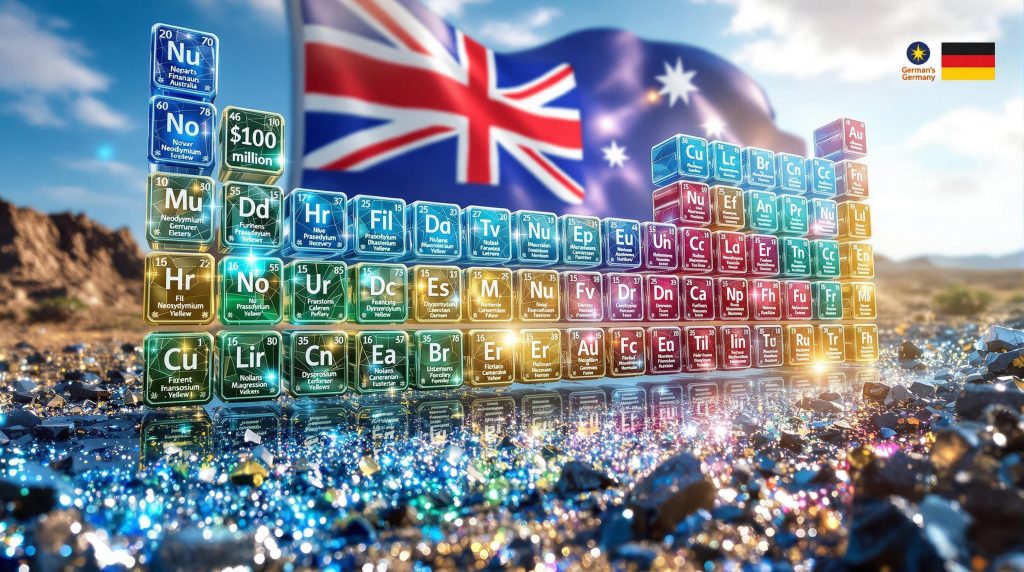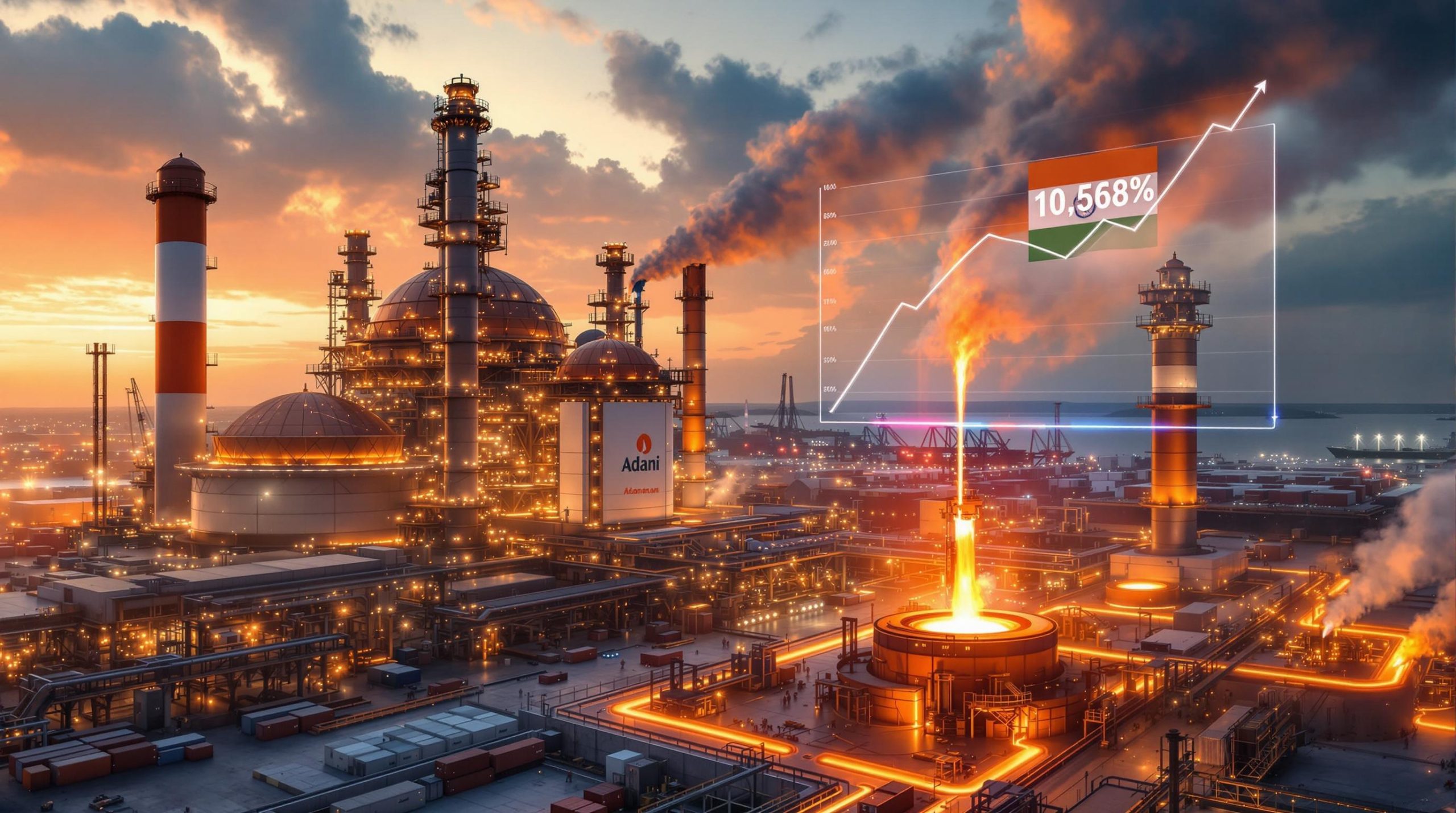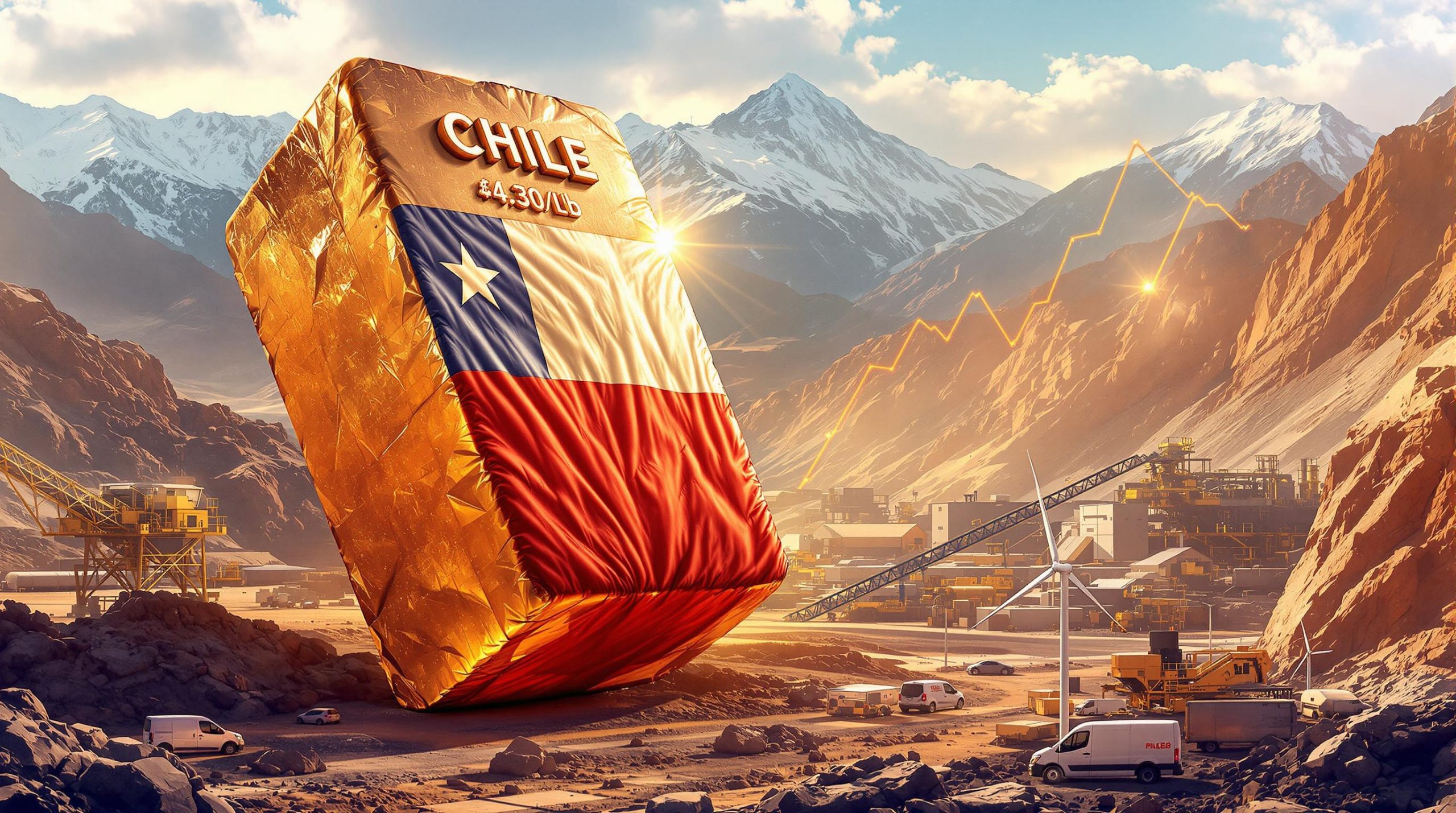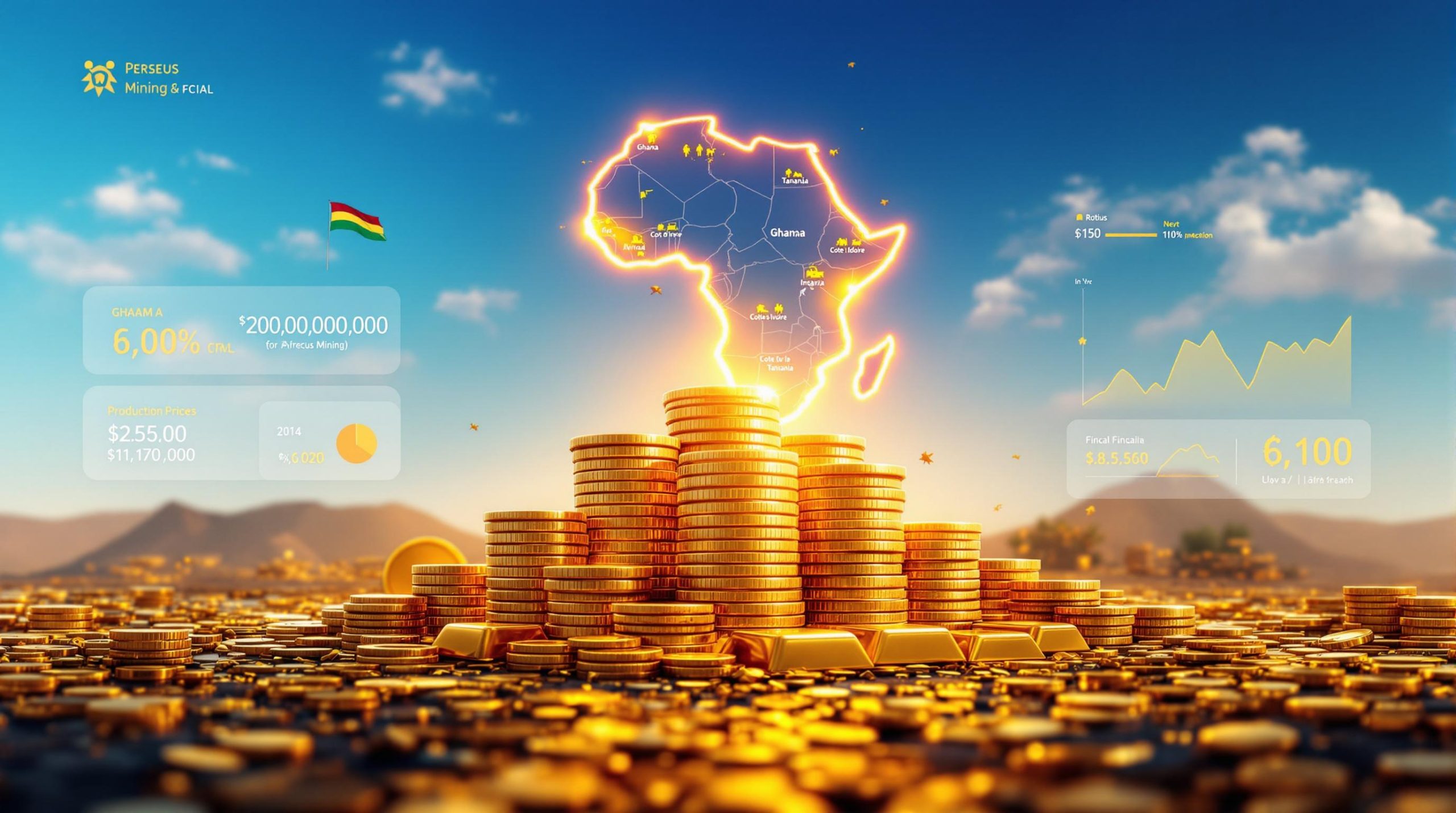Understanding Arafura Rare Earths' Export Finance Funding
Arafura Rare Earths is positioning itself as a crucial player in the global rare earths supply chain, with significant financial backing potentially coming from Australia's export finance agency. This development marks an important step in diversifying global rare earth supplies beyond China's dominant position and strengthens Australia's foothold in the critical minerals energy security.
What is Arafura Rare Earths seeking from Australia's export finance agency?
Arafura Rare Earths is actively seeking approximately $100 million in funding from Export Finance Australia to support its ambitious Nolans project. This potential funding represents a strategic cornerstone investment that would significantly advance the company's financial position. According to Reuters reporting, the company has already received a non-binding letter of interest from the agency, signaling preliminary approval for the funding request.
The funding would help "materially close" about 60% of the $775 million total equity requirement needed for the project's full development. This financial support is particularly significant as it represents government backing for a strategic resource development initiative that aligns with broader national interests.
CEO Darryl Cuzzubbo confirmed the progress, stating: "We will now be advancing due diligence with both of these parties," referring to Export Finance Australia and Germany's Raw Materials Fund, both of which are considering investment in the project.
The Nolans project is groundbreaking as it represents the first combined rare earths mine and refinery in Australia's Northern Territory, offering a complete supply chain solution within Australian borders. This integrated approach distinguishes it from many other mining operations that must ship minerals overseas for processing.
How does this funding fit into Australia's critical minerals strategy?
The potential Export Finance Australia funding forms part of a comprehensive national critical minerals strategy to develop sovereign capabilities in critical minerals. The Australian government has already demonstrated substantial commitment to the project, with Prime Minister Anthony Albanese previously announcing up to A$840 million ($547.85 million) in support for the Nolans project.
This level of government backing reflects the strategic importance placed on establishing domestic rare earth supply chains that reduce dependency on Chinese processing facilities. Australia's resources minister has even considered implementing price floors to support critical minerals projects, highlighting the government's willingness to intervene in markets to ensure strategic resource security.
The funding approach represents a coordinated effort between multiple government agencies and international partners. Export finance agencies typically provide loans, guarantees, and insurance to support domestic companies in international trade and development projects that align with national economic interests, particularly in strategic sectors like critical minerals.
International cooperation forms another key element of this strategy. The Nolans project recently entered the appraisal phase for potential equity investment from Germany's Raw Materials Fund after being referred by Germany's Interministerial Committee. This cross-border collaboration demonstrates how Western nations are working together to secure supply chains for technology-critical elements, pooling financial resources and technical expertise.
Who are the key stakeholders in Arafura Rare Earths?
The corporate leadership of Arafura Rare Earths, spearheaded by CEO Darryl Cuzzubbo, is navigating complex funding negotiations across multiple governmental and private entities. The company has attracted significant private investment, most notably from billionaire Gina Rinehart's Hancock Prospecting, which holds an 8.57% stake, making it the largest shareholder according to LSEG data.
As of the latest reporting, Arafura's shares were trading at approximately A$0.2, down 2.4% (as reported at 0258 GMT), slightly underperforming the broader mining sub-index which fell 0.2% during the same period. This stock performance reflects the challenging market conditions facing many mining companies, particularly those in pre-production phases.
Beyond private investors, key stakeholders include Export Finance Australia, which is considering providing cornerstone funding, and the Australian federal government, which has already committed substantial financial backing to the project. The potential involvement of Germany's Raw Materials Fund adds an international dimension to the stakeholder profile, demonstrating the project's significance beyond Australian borders.
These diverse stakeholders reflect the strategic importance of rare earths development, bringing together private capital, government funding, and international partners in a coordinated effort to establish new supply chains for these critical materials.
Why are rare earths strategically important to Australia and Western nations?
Rare earth elements, despite their name, are relatively abundant in the Earth's crust. However, they rarely occur in concentrated deposits that make extraction economically viable. These 17 metallic elements are crucial components in numerous high-technology applications that underpin modern economies and defense systems.
The strategic importance of rare earths stems from their essential role in renewable energy technologies, including permanent magnets used in wind turbines and electric vehicle motors. A single large wind turbine can contain several hundred kilograms of rare earth elements. Similarly, each electric vehicle requires approximately 1-2 kilograms of rare earth elements for its motor and battery systems.
Military applications further heighten their strategic significance. Rare earths are critical components in precision-guided munitions, radar systems, night vision equipment, and communications technology. This dual-use nature—being essential for both clean energy transition and national security—elevates rare earths to a matter of national strategic concern.
Currently, China dominates global rare earth production and processing, controlling approximately 85% of the processing capacity worldwide. This concentration creates significant supply risks for Western nations, particularly as geopolitical tensions rise. The development of alternative supply chains has become an economic and national security imperative for Australia and its allies.
By establishing domestic rare earth mining and processing capabilities, Australia aims to become a reliable alternative supplier to China, reducing vulnerability to potential supply disruptions or economic coercion. The rare earths market is projected to grow substantially with the green energy transition, potentially tripling in value over the next decade as demand for electric vehicles and renewable energy infrastructure accelerates.
What challenges does the Nolans project face?
Despite its strategic importance, the Nolans project faces significant hurdles that could impact its development timeline and ultimate success. The total equity requirement of $775 million represents a substantial capital investment in an industry known for high upfront costs and extended payback periods.
Current market volatility affecting the mining sector creates additional funding challenges. Investor sentiment toward mining investment opportunities tends to fluctuate based on commodity price expectations and macroeconomic conditions. This volatility can make raising capital more difficult, even for projects with strong government backing.
The project also faces competition from other rare earth developments globally, creating a competitive funding environment where multiple projects vie for limited investment capital. Several projects in the United States, Canada, and other parts of Australia are racing to establish alternative rare earth supply chains, potentially fragmenting available investment.
From a technical perspective, combining mining and refining operations presents complex development challenges requiring specialized expertise. Rare earth processing involves multiple complex chemical separation steps to isolate individual elements from ore concentrates. Establishing these technical capabilities requires significant investment in both infrastructure and human capital.
Regulatory compliance represents another potential obstacle. Mining operations face increasingly stringent environmental standards, particularly regarding water usage, waste management, and land rehabilitation. Meeting these requirements adds to project costs and can extend development timelines.
The combination of these financial, technical, and regulatory challenges underscores the importance of sustained government support to ensure the project's viability and completion.
What could this mean for global rare earths markets?
The successful development of the Nolans project could have far-reaching implications for global rare earths markets, potentially reshaping supply chains and pricing dynamics. Diversification of supply away from Chinese dominance represents the most significant potential impact, creating more balanced market dynamics and reducing concentration risk.
This diversification could lead to more stable and predictable rare earths pricing through increased competition. Currently, rare earth prices can be volatile due to supply concentration and policy changes in China. Additional supply sources would likely moderate these fluctuations, benefiting downstream manufacturers who rely on price stability for planning and investment decisions.
The establishment of complete supply chains outside China would create more resilient manufacturing ecosystems for critical technologies. Companies producing electric vehicles, wind turbines, and advanced electronics could develop supply relationships with Australian producers, reducing dependency on Chinese suppliers and associated geopolitical risks.
For Australia, successful development would establish the country as a major player in the rare earths sector, complementing its already strong position in other mineral resources. This diversification of Australia's export portfolio strengthens its economic resilience and provides growth opportunities in high-value processing industries rather than just raw material extraction.
From an investment perspective, the development creates potential opportunities across the rare earths value chain. Beyond direct investment in mining companies like Arafura, adjacent industries supporting rare earth processing, separation, and application development could see growth. Industries utilizing rare earth elements in their products might also benefit from more diverse and stable supply options.
FAQs About Arafura Rare Earths and Export Financing
What are rare earths and why are they important?
Rare earth elements comprise 17 metallic elements essential for many high-tech applications including magnets for electric vehicles, wind turbines, and defense systems. Despite their name, most are relatively abundant but rarely found in concentrated, economically viable deposits. Their unique electronic and magnetic properties make them irreplaceable in many modern technologies, particularly those supporting clean energy transition and advanced electronics.
How does export finance agency funding work?
Export finance agencies provide loans, guarantees, and insurance to support domestic companies in international trade and development projects that align with national economic interests, particularly in strategic sectors like critical minerals. These agencies typically offer more favorable terms than commercial lenders for projects deemed to have strategic national importance. Export Finance Australia, like similar agencies worldwide, aims to fill financing gaps where commercial funding might be insufficient due to perceived risks or strategic considerations.
What is the significance of the Nolans project?
The Nolans project represents Australia's first integrated rare earths mine and processing facility, potentially reducing dependence on Chinese processing and creating a complete domestic supply chain for these critical materials. This integration allows Australia to capture more value from its mineral resources by performing higher-value processing steps domestically rather than exporting raw materials. The project also serves as a proof-of-concept for rare earth processing outside China, potentially encouraging similar developments elsewhere.
How does this project relate to global rare earths markets?
By establishing significant non-Chinese production capacity, the project could help diversify global supply chains, potentially affecting pricing dynamics and reducing supply vulnerabilities for Western manufacturers. The addition of new supply sources typically increases market competition, potentially leading to more stable pricing and encouraging innovation in extraction and processing technologies. Western manufacturers gain alternative supply options, reducing business continuity risks associated with geopolitical tensions or trade disruptions.
Investing Implications of Rare Earth Supply Chain Developments
The evolving rare earth supply landscape presents several potential investment considerations for market participants interested in this strategic sector. While specific investment advice must come from qualified financial advisors, understanding the broader market dynamics can help inform investment perspectives.
Investors should consider the long-term horizon required for rare earth projects. Development timelines typically span 5-10 years from discovery to production, with significant capital requirements throughout this period. This extended timeline necessitates patient capital and tolerance for development risks.
Supply chain investments beyond mining offer diversification opportunities. While mining represents the most direct exposure to rare earths, processing, separation, and magnet manufacturing represent higher-value activities with potentially stronger margins. Companies developing these midstream and downstream capabilities may offer different risk-reward profiles compared to pure mining operations.
Government support programs significantly impact project economics. When evaluating rare earth investments, the extent and reliability of government backing—whether through direct funding, loan guarantees, or offtake agreements—can substantially alter project viability. Projects with strong government backing through critical minerals strategic reserve initiatives generally face reduced execution risk compared to those relying solely on private capital.
Geopolitical considerations increasingly influence rare earth markets. Rising tensions between major powers have elevated rare earths from purely commercial commodities to strategic resources. This shift can create both opportunities and risks, as government priorities may override normal market mechanisms during periods of heightened concern over supply security. Recent critical minerals policy order changes demonstrate how quickly the regulatory landscape can shift.
The rare earths sector requires specialized technical understanding. The complexity of rare earth geology, processing requirements, and end-use applications creates information asymmetries that informed investors can potentially leverage. Understanding factors such as individual element distribution within deposits (heavy versus light rare earths) and processing recovery rates can provide deeper insights into project economics.
As with any specialized commodity market, investors should maintain realistic expectations about market size and liquidity. Despite their strategic importance, rare earths represent a relatively small market by value compared to major commodities, which can contribute to price volatility and potentially limited exit opportunities for some investments.
Ready to Spot the Next Rare Earths Opportunity?
Stay ahead of critical mineral discoveries with Discovery Alert's proprietary Discovery IQ model, delivering real-time notifications when significant ASX announcements occur. Visit our discoveries page to understand how major mineral finds like rare earths can generate substantial returns for early investors.




